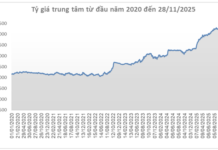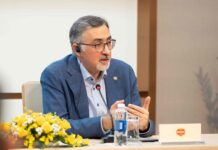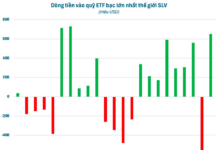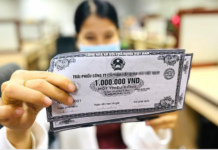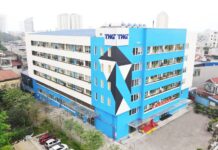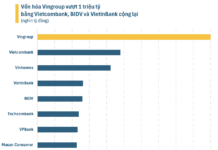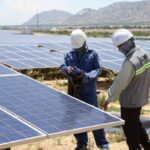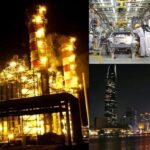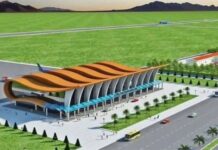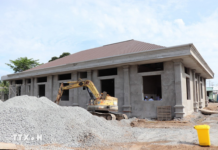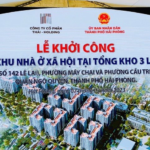Careful Calculation of Nuclear Reactor Scale
Sharing with Tien Phong newspaper, energy expert Dao Nhat Dinh stated that compared to other energy sources such as coal-fired power, aside from safety concerns, nuclear power has superior advantages.
Amid a lack of large-scale hydroelectric resources for development, and the import of coal and gas being subject to global fluctuations, Vietnam urgently needs a stable power source to maintain its energy security while meeting the requirements of the energy transition and its Net Zero commitment by 2050.

Developing nuclear power will help Vietnam ensure long-term energy security.
“As we continue to grow our economy, embracing nuclear energy is inevitable. Countries worldwide have chosen nuclear power as a key emissions reduction strategy in their energy development plans,” emphasized Mr. Dinh.
According to this expert, the choice of technology and the scale of deployment will be among the priorities in the process of restarting the project, along with enhancing training and preparing resources for investment.
“There are diverse opinions about opting for small or large-scale reactors. I believe we should not opt for 100 MW nuclear reactors. This capacity does not address practical needs, while the operating procedures and safety assurance are similar for both small and large reactors. Moreover, small-scale reactors have not proven their effectiveness,” said Mr. Dinh.
“My viewpoint on developing nuclear power is to refrain from choosing small reactors. We must opt for the latest technology and larger-scale reactors that align better with Vietnam’s current demands. We cannot gamble on small-scale nuclear power plants that lack validation.”
Energy expert Ha Dang Son, Director of the Center for Energy and Green Growth Research
Mr. Dinh also suggested that the choice of Generation III+ nuclear reactors, as mentioned in Vietnam’s previous nuclear power deployment plan for the Ninh Thuan project, is a prudent option. Japan is currently utilizing this generation of reactors with numerous improvements, demonstrating enhanced safety over time. Concerns about radioactive waste and spent fuel rods are not insurmountable challenges.
In adherence to regulations and commitments regarding the prevention of nuclear weapons proliferation, spent fuel rods will be retrieved based on the principle that the country supplying the reactor is responsible for their retrieval. Other materials will be managed according to general regulations on nuclear waste disposal.
“The most crucial aspect now is the determination to execute the nuclear power project. Human resource training is another vital consideration, as previously trained personnel have moved on to other assignments or experienced interruptions in their training over the past decade.
In reality, there aren’t many specialists trained in nuclear energy, so retraining is feasible. This isn’t an insurmountable hurdle. Another critical aspect is finding a long-term partner to accompany Vietnam in developing nuclear power and providing capital.
When selecting a partner, we should not be swayed by the lowest bidder. Many large-scale projects in other countries have been altered when a new bidder offers a significantly lower price,” Mr. Dinh assessed.
Numerous Advantages
Electricity sector experts argue that the development of nuclear power in Vietnam is currently in a favorable phase for relaunch. For instance, compared to a coal-fired power plant that requires a storage area equivalent to a football field to stockpile two weeks’ worth of coal, a nuclear power plant can store fuel for two years in a briefcase.
In terms of effectiveness, empirical studies reveal that nuclear power has the highest capacity factor among all energy sources. Specifically, a 1,000 MW nuclear power plant will generate electricity at up to 92% of its designed capacity, whereas a comparable gas-fired power plant can only produce 56% of its designed capacity.
Wind and solar power plants fare even lower, achieving only 35.4% and 24.9%, respectively. This indicates that a nuclear power plant with the same installed capacity is as efficient as two gas-fired power plants or three wind power plants, or equivalent to four solar power plants.
With such a high capacity factor and stable operation, unaffected by weather conditions like other renewable energy sources, nuclear power plays a pivotal role in Vietnam’s energy transition, serving as a reliable baseload power source to facilitate the development of renewable energy.
Regarding nuclear power development, PGS.TS Vuong Huu Tan, former Director of the Department of Radiation and Nuclear Safety (Ministry of Science and Technology), shared with the media that although Vietnam is a latecomer to nuclear power and faces challenges, it also has certain advantages.
Vietnam has a long history of preparation for the previous Ninh Thuan nuclear power project, and there are experts with a good understanding of nuclear power projects to advise the government.
Specifically, Vietnam has trained over 300 personnel for the Ninh Thuan nuclear power project through cooperation programs with Russia and Japan within the framework of the Ninh Thuan nuclear power project. Additionally, Vietnam has trained a significant number of officials for the nuclear regulatory agency and technical support organizations through collaboration with the IAEA, the European Union, and industrialized nuclear energy countries.
According to Mr. Tan, Vietnam has also built and promulgated the Law on Atomic Energy in 2008, along with guiding documents on nuclear power plants. During the implementation of the Ninh Thuan nuclear power project, the relevant agencies identified shortcomings in the legal framework, which will be rectified in the future.
SMR Technology Holds More Promise
In an interview with Tien Phong newspaper, Mr. Le Dai Dien, former Deputy Director of the Nuclear Training Center (Vietnam Atomic Energy Institute), stated that to relaunch the nuclear power project after years of suspension, Vietnam should initially focus on mechanisms, capital mobilization, and human resource training to meet stringent radiation safety standards, thereby expediting the implementation process and ensuring the best preparation for this crucial national project.
According to Mr. Dien, a prerequisite and essential element is a State Steering Committee, similar to the one established previously. This committee should demonstrate “strategic determination,” and to execute its mission effectively, it should be led by a high-ranking leader, such as the Prime Minister. Additionally, the committee needs a mechanism to coordinate with suitable consultants. In terms of policy, it requires managers like ministers and provincial chairmen. And, of course, it needs experts with specialized knowledge.
For capital mobilization, we need policymakers, banks, and other financial institutions. When working with partners, we must rely on the legal basis, regulations, standards, and guidelines of Vietnam and, if necessary, international ones. Therefore, the Law on Atomic Energy, which took effect in 2009, should be reviewed and amended to align with new trends.
To train high-quality human resources for the nuclear power project, Mr. Dien suggested that we need to grasp and gradually master critical technologies in crucial areas such as reactor control, spent fuel treatment or reprocessing, and fuel production. Training should be focused to avoid wastefulness of resources and finances.
Regarding the choice of technology for Vietnam’s first project, Mr. Dien opined that SMR (Small Modular Reactor) technology holds more promise due to the smaller number of operating personnel required. This type of reactor is safer, avoiding many initiation incidents associated with second and third-generation reactors. Additionally, the fuel replacement cycle is long (5-10 years), the reactor size is compact, making site selection more convenient, and it boasts lower costs and shorter construction times.
According to this expert, currently, these advantages are merely “promising.” According to the IAEA, there are 68 SMR reactor designs at various stages of development, ranging from conceptual design to complete design, licensing, and even construction.
“The suggestion to experiment with a small-scale reactor for Vietnam’s first project is impractical. Note that a small-scale reactor does not imply simpler technology.
In my opinion, the VVER-1200 (AES2006) reactor for the Ninh Thuan 1 project in Phuoc Dinh should be given priority consideration as it is currently being constructed and operated in Russia, Belarus, Bangladesh, and other countries. This will help avoid wasting time on initial investigations, and we can leverage the results of our cooperation with them in site evaluation and Vietnam’s previous assessments,” stated Mr. Dien.
According to energy experts, the initial SMR projects will incur very high costs due to their novelty, and their future remains uncertain. It is predicted that SMR technology will become more affordable or even economical in the distant future (the first commercialized SMR project is expected in 2030). It will take until the second half of the 21st century for SMRs to gain widespread adoption (once their safety and economic viability are proven), for example, Indonesia is eyeing SMR deployment between 2050 and 2060.
Unlocking New Frontiers in Energy: The Amended Power Law Lights the Way for Innovative Electricity Ventures
On November 30, the National Assembly passed the amended Power Law with an overwhelming majority of 439 out of 463 delegates voting in favor, accounting for 91.65%. This pivotal piece of legislation carries significant weight, impacting the economy and ensuring the nation’s growth, development, and energy security.
The Power of Nuclear Energy: Unlocking Vietnam’s Future with the Ninh Thuan Nuclear Power Project
On November 27, the government presented to the National Assembly a proposal to continue the investment policy for the Ninh Thuan nuclear power project. The government affirmed that the development of nuclear power must ensure the highest level of safety and minimize risks to people and the environment.









